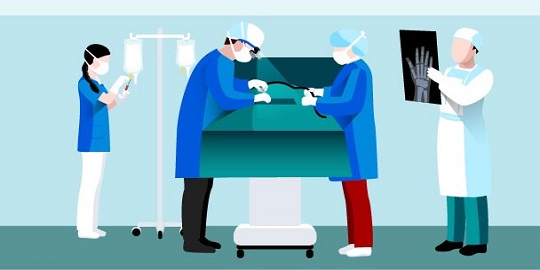Background
Preventing drug diversion is important in all areas of the health system and especially in growing areas such as ambulatory procedural settings. As I transition to life during and after the pandemic it is important to recognize that care delivery has changed and will be done differently moving forward. Many procedures and less acute surgeries are now transitioning from the inpatient hospital setting to more ambulatory surgical centers and clinics. As pharmacy leaders, we must be adaptive to this change to fulfill our mission of bringing care closer to the patient, but also insuring we have the proper safeguards in place to protect against medication and controlled substance diversion.
Performing the assessment
Understanding new strategies of care delivery from my healthcare provider and administrator colleagues will help me be prepared to identify new workflows involving medication use. I find it helpful to be proactive in seeking to understand how medications will be purchased, stored, dispensed, and ultimately administered for a new service line. Since patient care delivery often changes faster than a budget cycle, it may not always be possible to leverage automation immediately to uphold drug security. With this in mind, I try to visit offsite locations and work collaboratively with my nursing and physician colleagues to review medication use practices.
Establishing a framework for success
As I review the ambulatory procedural drug purchasing process, I outline how medications will be ordered and par levels established. Calling out that controlled substances will have additional requirements than prescription medications in general is an important differentiator. I try to be upfront about these unique workflows to achieve buy in and not catch my colleagues off guard. After purchasing practices are discussed, creating segregation of duties is the next key strategy in reducing internal diversion risk. Often in surgical centers the nurse or clinic supervisor may submit the medication order and also receive. While this practice provides an efficient workflow it may also lead to a higher diversion risk since the same person is responsible for both activities. Identifying separate individuals who can be responsible for the process is one way of approaching the situation, but another is to have pharmacy purchase these medications to insure standard work and oversight. This is usually a welcomed partnership as nursing and other allied professional staffing has been limited.
Another key area I always try to review is how medications will be received and subsequently stored. This includes both prescription medications as well as any controlled substances. While loading these medications into an automated dispensing cabinet is always a best practice for monitoring and oversight it may not always be feasible in all ambulatory locations. There may be several limitations from department budgetary constraints to long lead times from the automation manufacturer. In these cases alternative strategies of medication security must be reviewed keeping in mind the strict regulatory requirements of the Drug Enforcement Administration and Board of Pharmacy. This often means identifying a secure room/cabinet where only medications will be stored and keeping them under double lock using some form of biometric or badge access.
Restricting medication security in a clinic setting is important while also trying to be cognizant of team workflows. Usually these ambulatory surgical settings are fast paced with patients being treated and discharged home in the same day. This means that accommodations to staff needs must be considered in the drug storage paradigm. Typically, I will restrict access to the medication storage location to only those licensed to handle medications and require medications to be signed out and documented. While this process has limitations, it can be further be monitored by security video and clinical leadership performing perpetual counts on a routine basis. It is also important to recognize that storage location is only one aspect of the controlled substance monitoring program.
An additional consideration to drug security must be given to the actual medication product itself. Purchasing medications that come in tamper resistant or evident packaging provides a visual alert to someone if a medication has been altered. This visual safeguard can be useful in offsite locations where we rely on frontline practitioners to monitor medication use and report abnormal activity. Secondary to tamper resistant packing is purchasing medications that come in the lowest dosage form needed and within a prefilled container or syringe. By having medication available in its ready to use form at the lowest dose needed we reduce the amount of controlled substance waste generated within a procedure. By reducing this waste, we also inherently reduce the risk of excess controlled substance waste diverted or not accounted for. The ready to use dosage form also reduces unnecessary manipulations that can improve medication safety and concerns around sterility. Ultimately these practices in concert reduce the likelihood of diversion and provide a framework of medication oversight.
Conclusion
By recognizing that healthcare delivery is continuing to evolve, I am able to adapt our medication use and controlled substance practices to reduce the potential for diversion. This also enables us to better protect our employees and patients against the dangers of drug diversion. Cross-clinical collaboration is essential in establishing successful workflows, identifying medication storage locations, and selecting medication products that provide safe medication use.

